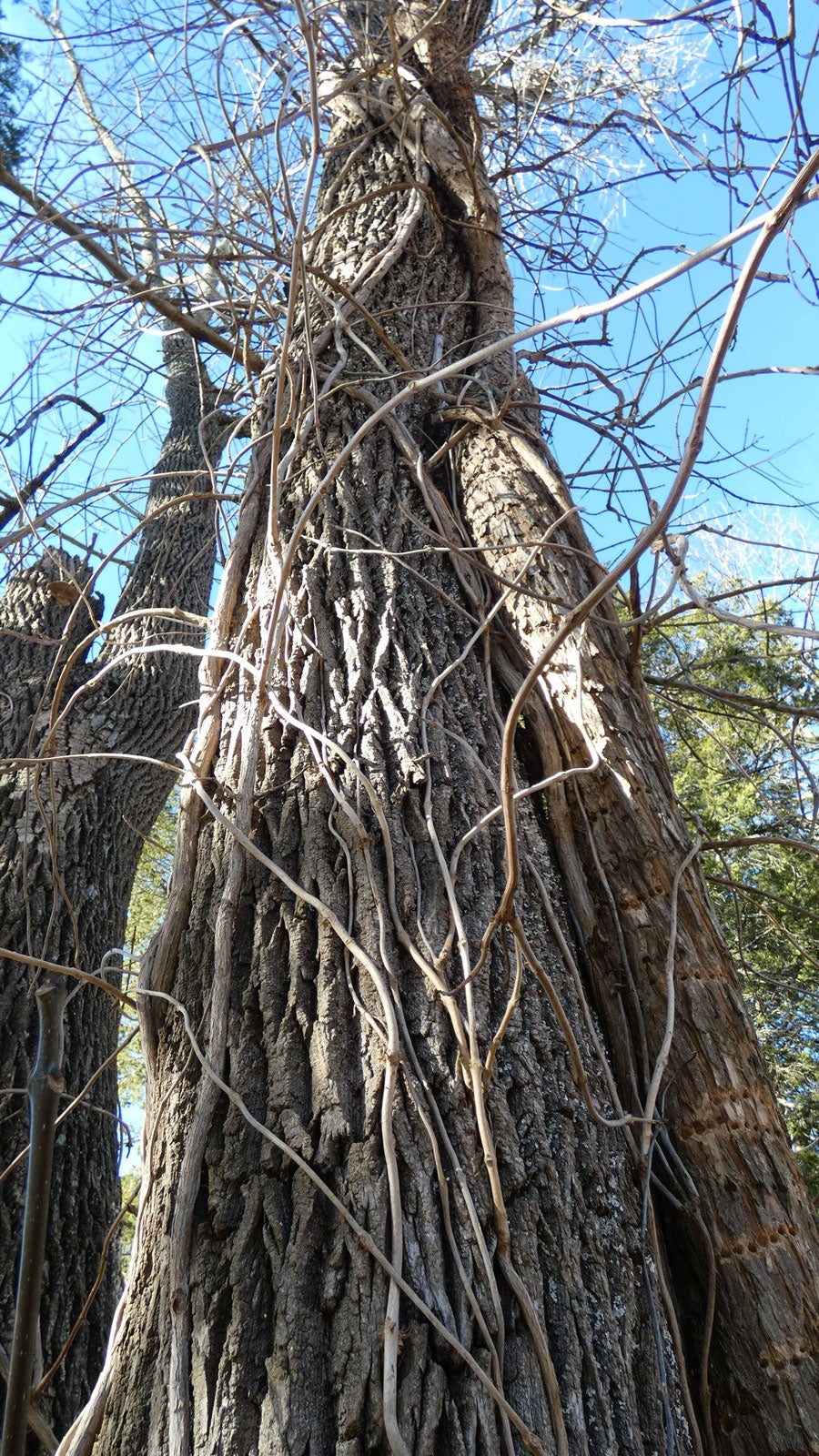Campsis Tree Damage – How To Remove Trumpet Vines From Trees


In many places, trumpet vines are a stunning native perennial plant. Attractive to pollinators and to hummingbirds, these vines are commonly seen growing along roadsides and up the sides of trees. While some trumpet vine plantings can be well maintained by regular pruning, others may become invasive. These invasive vines can quickly spread through underground runners, which make the plant extremely difficult to control and maintain.
Removing the vines from trees is often a very common issue for home gardeners. Let’s learn more about removing trumpet vine on trees.
Will Trumpet Vines Damage Trees?
While beautiful, these Campsis vines on trees can be very detrimental to the overall health of the host tree. Though trumpet vines only use trees to climb, there are some negative effects to consider.
- Trees which have been covered in vines may struggle to support the additional weight, which may lead to broken or damaged limbs.
- Trees which are in a weakened or diseased state may also pose the risk of falling.
- The vines may additionally decrease the amount of water and nutrients that are readily available to the tree.
How to Remove Trumpet Vines from Trees
The process of removing Campsis vines on trees is time consuming, and Campsis tree damage most often occurs when the vines are removed from the trunk of the tree. This can be best avoided by cutting the stem of the vine at the base of the plant, and then allowing the vine to completely dry and die back before attempting to remove it.
Removing trumpet vines on trees may be difficult due to the strong hair-like attachments to the bark of the tree. If the vines cannot be easily removed, consider cutting the stem of the vine into smaller and more manageable segments. Most master gardeners do not suggest the use of herbicide chemicals, as this could greatly damage the host tree.
Always use caution when attempting to remove a trumpet vine from tree bark. Campsis plants contain chemicals which can cause rash and skin irritation in sensitive individuals, making it imperative to wear protective clothing such as gloves, long sleeves, and eye protection.
Large and particularly aggressive vines may need to be removed by landscape professionals.
Gardening tips, videos, info and more delivered right to your inbox!
Sign up for the Gardening Know How newsletter today and receive a free copy of our e-book "How to Grow Delicious Tomatoes".

Tonya Barnett has been gardening for 13 years. Flowers are her passion. She has transformed her backyard into a cut flower garden, which she regularly chronicles on her YouTube channel http://www.youtube.com/@tonyawiththeflowers.
-
 Looking For Plants To Give You The Soft And Fuzzies? Try These 5 Fuzzy Leaf Plant Options
Looking For Plants To Give You The Soft And Fuzzies? Try These 5 Fuzzy Leaf Plant OptionsLovers of texture, drama, silver foliage and tactile plants will adore these special sensory garden additions. These fuzzy leaf plant options will leave you all aglow
By Susan Albert
-
 Get Ready For A Summer Of Hummers! Grow These Full Sun Hummingbird Plants and Flowers
Get Ready For A Summer Of Hummers! Grow These Full Sun Hummingbird Plants and FlowersIf you’re lucky enough to enjoy a sunny backyard, make sure you are maxing out on your pollinator opportunities and grow these full sun hummingbird plants and flowers
By Tonya Barnett